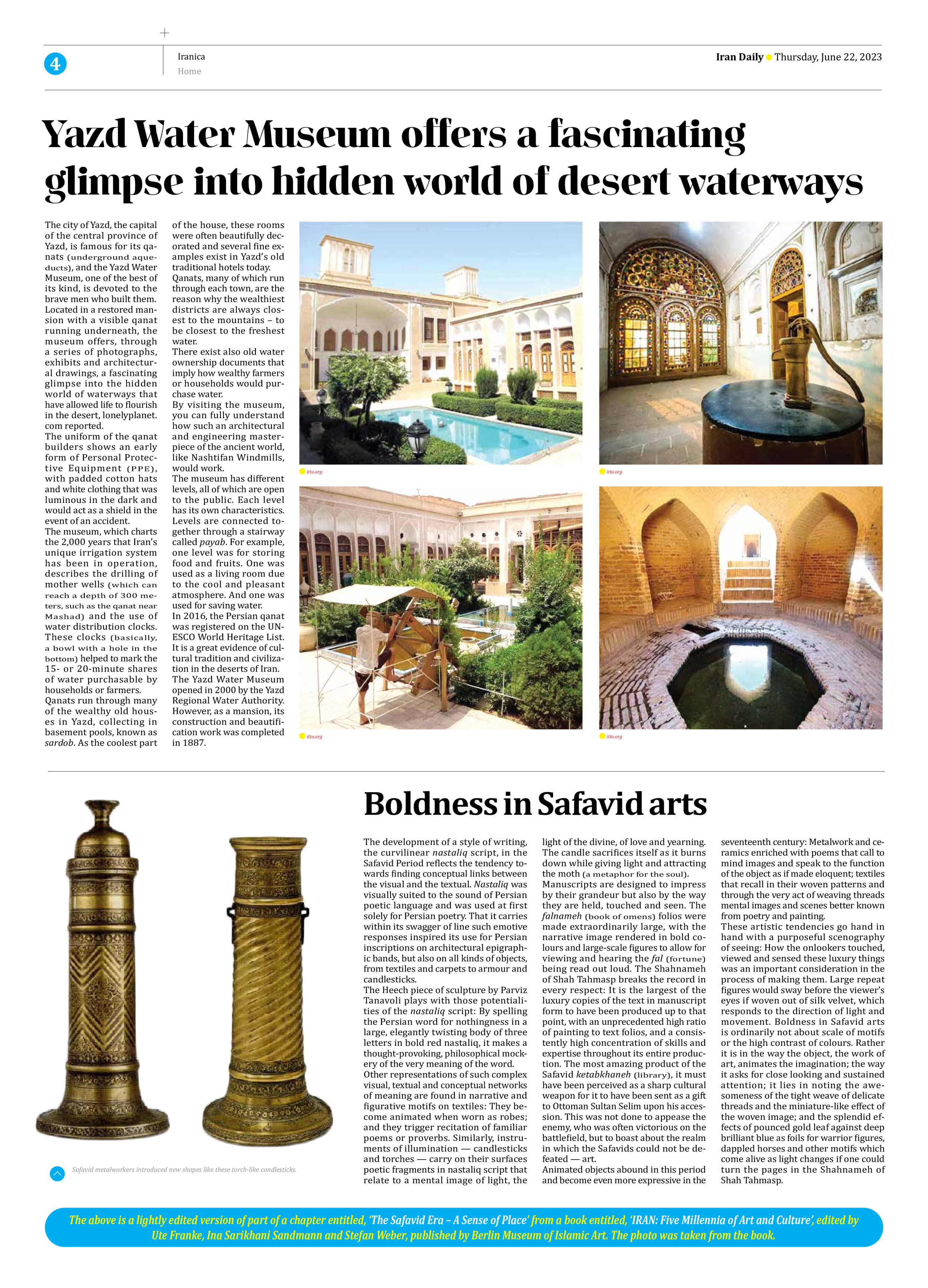
Boldness in Safavid arts
The development of a style of writing, the curvilinear nastaliq script, in the Safavid Period reflects the tendency towards finding conceptual links between the visual and the textual. Nastaliq was visually suited to the sound of Persian poetic language and was used at first solely for Persian poetry. That it carries within its swagger of line such emotive responses inspired its use for Persian inscriptions on architectural epigraphic bands, but also on all kinds of objects, from textiles and carpets to armour and candlesticks.
The Heech piece of sculpture by Parviz Tanavoli plays with those potentialities of the nastaliq script: By spelling the Persian word for nothingness in a large, elegantly twisting body of three letters in bold red nastaliq, it makes a thought-provoking, philosophical mockery of the very meaning of the word.
Other representations of such complex visual, textual and conceptual networks of meaning are found in narrative and figurative motifs on textiles: They become animated when worn as robes; and they trigger recitation of familiar poems or proverbs. Similarly, instruments of illumination — candlesticks and torches — carry on their surfaces poetic fragments in nastaliq script that relate to a mental image of light, the light of the divine, of love and yearning. The candle sacrifices itself as it burns down while giving light and attracting the moth (a metaphor for the soul).
Manuscripts are designed to impress by their grandeur but also by the way they are held, touched and seen. The falnameh (book of omens) folios were made extraordinarily large, with the narrative image rendered in bold colours and large-scale figures to allow for viewing and hearing the fal (fortune) being read out loud. The Shahnameh of Shah Tahmasp breaks the record in every respect: It is the largest of the luxury copies of the text in manuscript form to have been produced up to that point, with an unprecedented high ratio of painting to text folios, and a consistently high concentration of skills and expertise throughout its entire production. The most amazing product of the Safavid ketabkhaneh (library), it must have been perceived as a sharp cultural weapon for it to have been sent as a gift to Ottoman Sultan Selim upon his accession. This was not done to appease the enemy, who was often victorious on the battlefield, but to boast about the realm in which the Safavids could not be defeated — art.
Animated objects abound in this period and become even more expressive in the seventeenth century: Metalwork and ceramics enriched with poems that call to mind images and speak to the function of the object as if made eloquent; textiles that recall in their woven patterns and through the very act of weaving threads mental images and scenes better known from poetry and painting.
These artistic tendencies go hand in hand with a purposeful scenography of seeing: How the onlookers touched, viewed and sensed these luxury things was an important consideration in the process of making them. Large repeat figures would sway before the viewer’s eyes if woven out of silk velvet, which responds to the direction of light and movement. Boldness in Safavid arts is ordinarily not about scale of motifs or the high contrast of colours. Rather it is in the way the object, the work of art, animates the imagination; the way it asks for close looking and sustained attention; it lies in noting the awesomeness of the tight weave of delicate threads and the miniature-like effect of the woven image; and the splendid effects of pounced gold leaf against deep brilliant blue as foils for warrior figures, dappled horses and other motifs which come alive as light changes if one could turn the pages in the Shahnameh of Shah Tahmasp.
The above is a lightly edited version of part of a chapter entitled, ‘The Safavid Era – A Sense of Place’ from a book entitled, ‘IRAN: Five Millennia of Art and Culture’, edited by Ute Franke, Ina Sarikhani Sandmann and Stefan Weber, published by Berlin Museum of Islamic Art. The photo was taken from the book.







